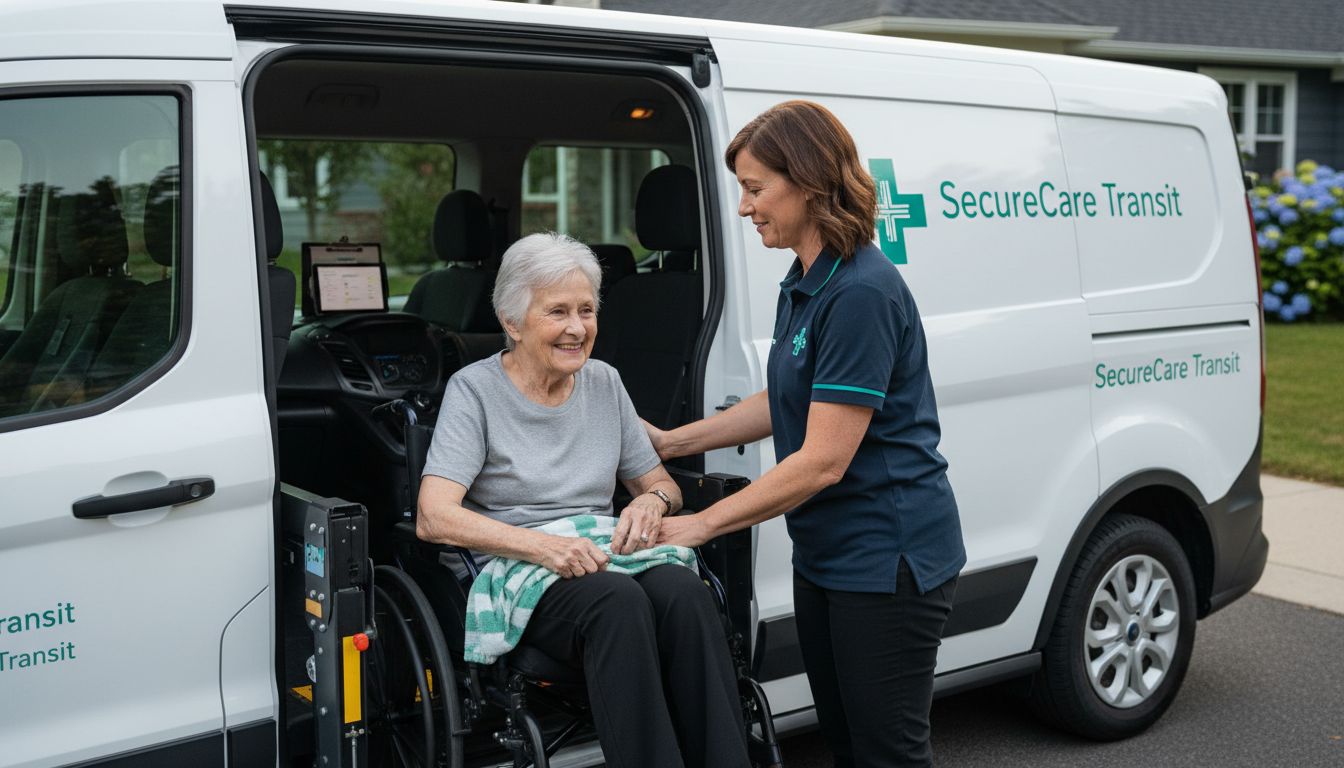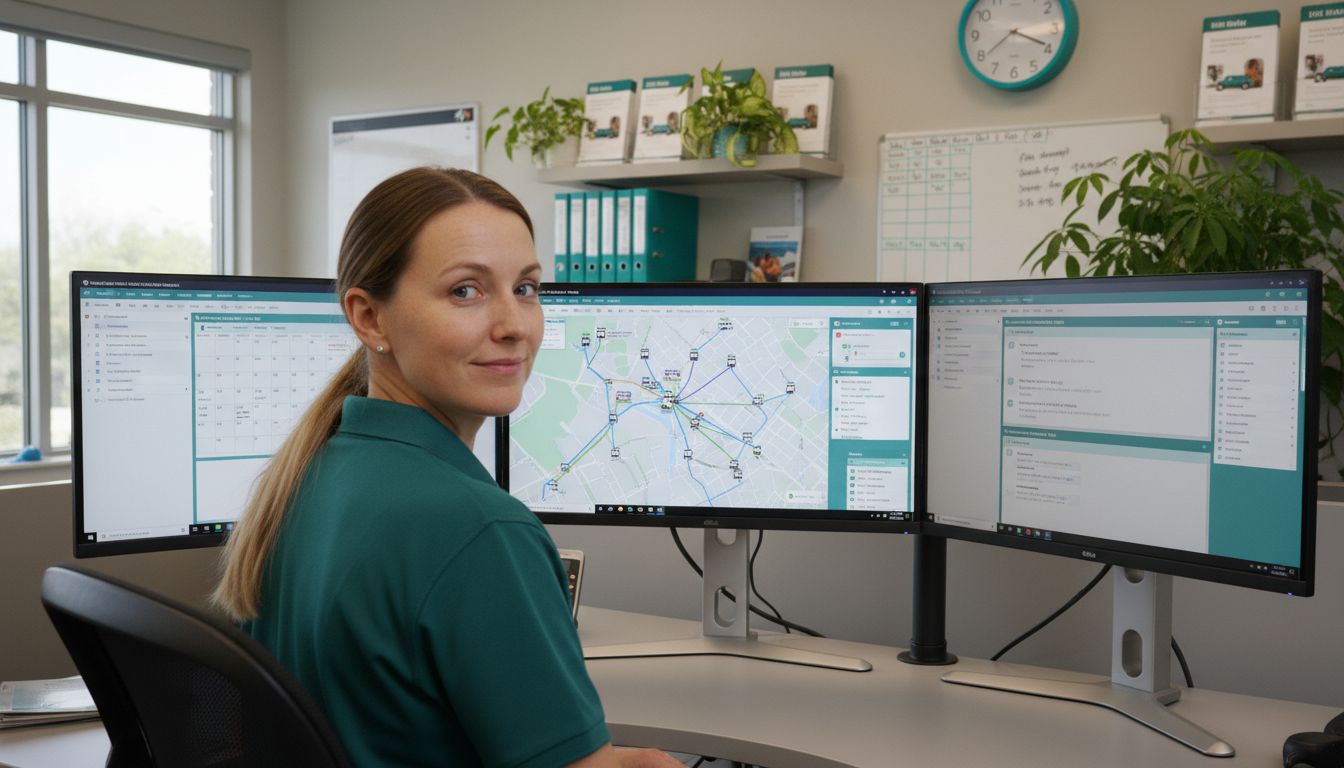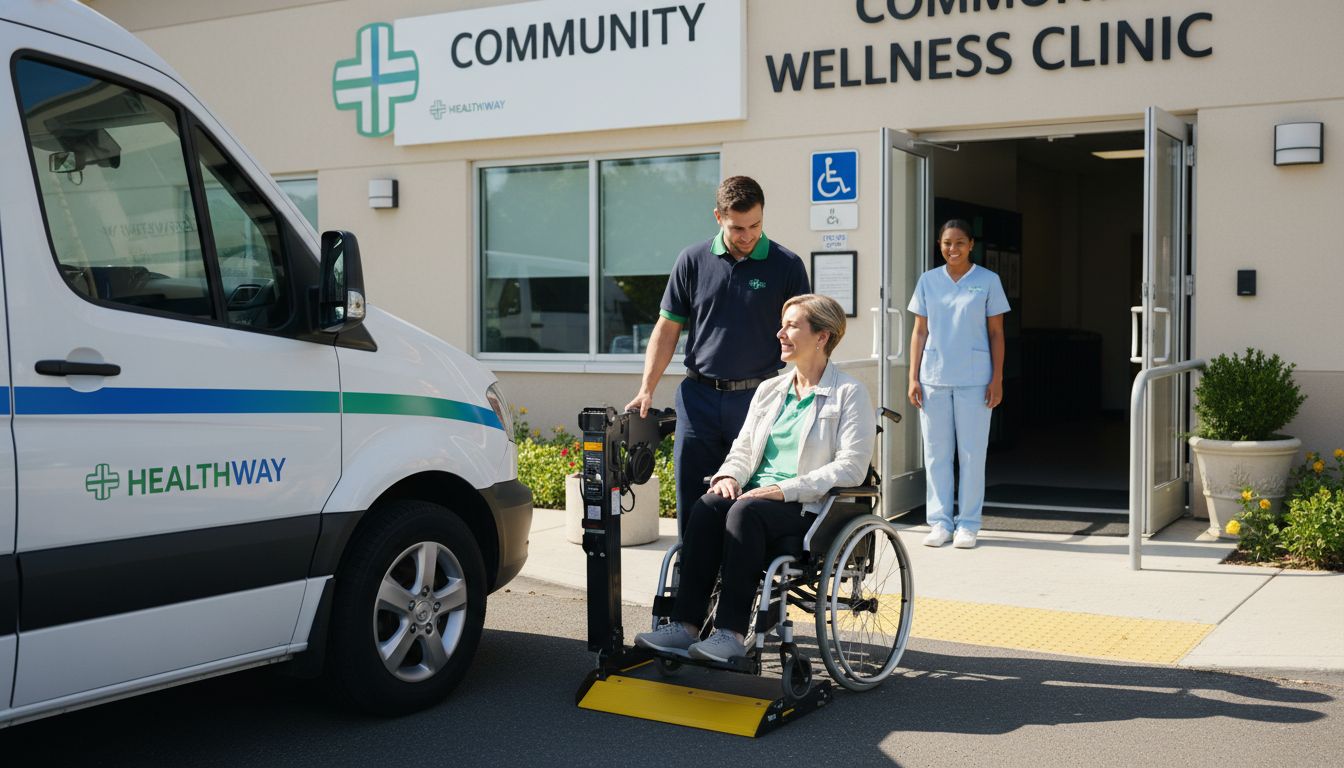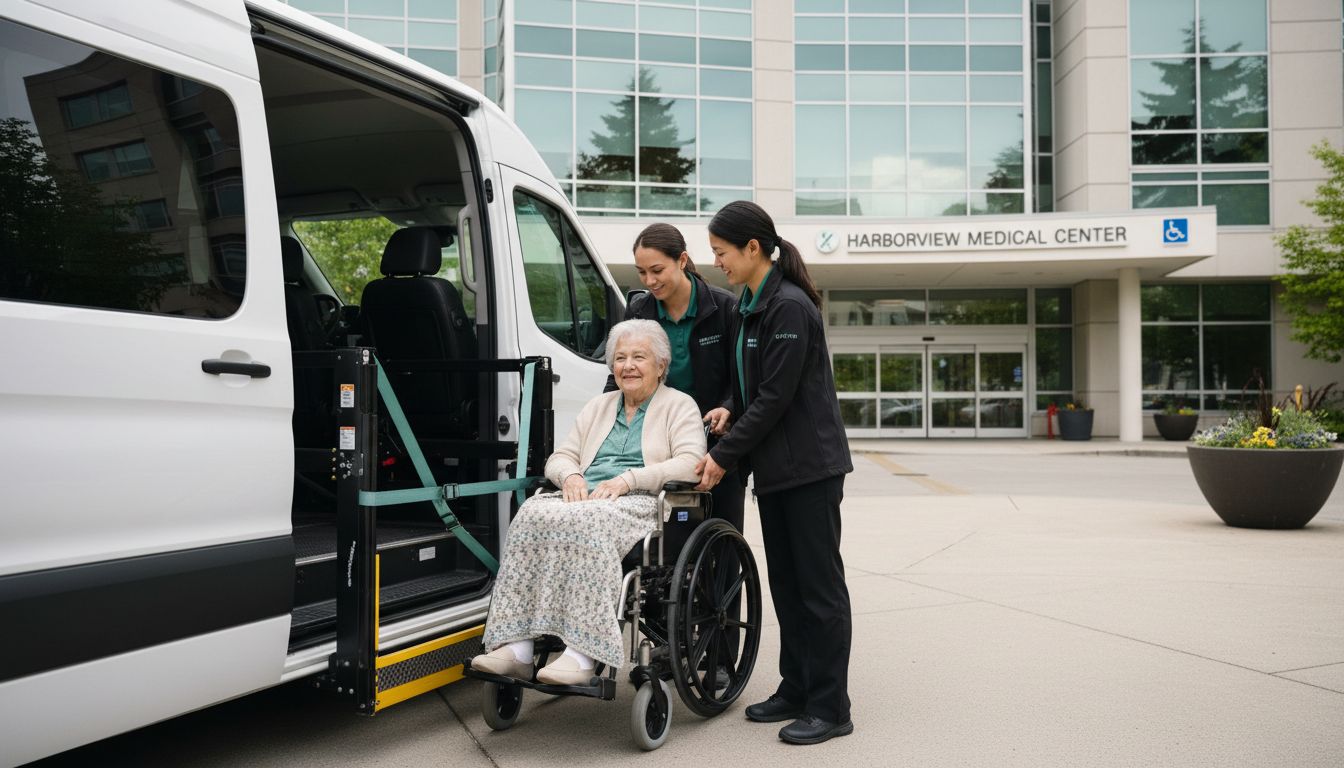Non Emergency Transportation Provider: Complete Guide

Nearly 3.6 million Americans miss or delay healthcare because they lack reliable transportation. Missing medical appointments can lead to serious health problems, especially for people with chronic conditions, disabilities, or limited mobility. Understanding how non-emergency transportation providers work is crucial for anyone facing barriers to healthcare. With a range of services designed to get patients safely to doctors and clinics, these providers help close the gap between medical need and real-world access.
Table of Contents
- Defining Non Emergency Transportation Providers
- Types and Service Models in the US
- Key Operational Features and Technologies
- Legal, Safety, and Compliance Requirements
- Cost Structures and Funding Sources
- Comparing NEMT to Alternative Solutions
Key Takeaways
| Point | Details |
|---|---|
| NEMT Purpose | Non-emergency medical transportation (NEMT) ensures access to healthcare for individuals facing transportation barriers. |
| Service Models | NEMT services in the U.S. vary greatly, utilizing third-party brokers, direct management, and hybrid models to meet regional healthcare needs. |
| Operational Technology | Advanced technologies enhance NEMT operations by ensuring reliable, safe, and efficient patient transportation through real-time tracking and communication. |
| Funding Sources | NEMT is primarily funded through Medicaid and state programs, with varied local strategies reflecting different transportation infrastructure and needs. |
Defining Non Emergency Transportation Providers
Non-emergency medical transportation (NEMT) is a specialized service designed to help individuals access critical medical care when traditional transportation options are unavailable. According to Centers for Medicare & Medicaid Services, NEMT provides transportation assistance for patients who need help getting to and from medical appointments, ensuring they can receive necessary healthcare services.
At its core, NEMT serves populations who face significant transportation barriers. Medicaid and CHIP Payment and Access Commission highlights that these services cover a broad range of transportation modes, including:
- Taxis
- Buses
- Vans
- Personal vehicles
The primary goal of non-emergency transportation providers is to eliminate transportation as a barrier to healthcare access. These services are particularly crucial for vulnerable populations such as elderly patients, individuals with disabilities, low-income communities, and those with chronic medical conditions who cannot drive or use standard public transportation.
Understanding the nuances of NEMT requires recognizing its fundamental purpose: connecting patients with essential medical services. For individuals who might otherwise miss critical appointments due to transportation challenges, these providers offer a lifeline of mobility and medical access. Understanding NEMT Transportation Providers: A Clear Guide provides additional insights into the comprehensive role these services play in modern healthcare delivery.
Types and Service Models in the US
Non-emergency medical transportation (NEMT) services in the United States are characterized by significant variability in their operational models and delivery strategies. Medicaid and CHIP Payment and Access Commission reports that states have considerable flexibility in designing and implementing their NEMT benefits, leading to diverse approaches across different regions.
Third-Party Broker Model has emerged as the predominant service delivery strategy. According to Medical Transportation Accreditation Coalition, many states have transitioned to specialized transportation brokers who manage access to NEMT services for Medicaid populations. This model, established under the Deficit Reduction Act of 2005, allows states to contract with professional brokers to:
- Improve service efficiency
- Control operational costs
- Streamline transportation coordination
- Ensure comprehensive patient coverage
Beyond the broker model, states employ various service approaches to meet unique regional healthcare transportation needs. These can include direct state management, county-level coordination, partnerships with local transit authorities, and hybrid models that combine multiple strategies.
Here’s a comparison of common NEMT service models in the United States:

| Service Model | How It Works | Key Advantages | Common Settings |
|---|---|---|---|
| Third-Party Broker | State contracts private brokers | Cost control Streamlined coordination |
Most states Urban & rural areas |
| Direct State Management | State directly manages NEMT operations | Direct oversight Policy alignment |
Smaller states Counties |
| County/Local Coordination | Local governments organize service | Flexibility Local knowledge |
Large counties Rural zones |
| Hybrid/Integrated Models | Mix of brokers, state, and local systems | Customizable Adapts to needs |
Diverse populations Complex regions |
The complexity of NEMT service models reflects the nuanced healthcare landscape across different states. Urban areas might rely more heavily on public transit integrations, while rural regions may require more personalized transportation solutions. Complete Guide to Non Emergency Medical Transportation Services offers deeper insights into how these diverse models adapt to local healthcare infrastructure and patient population needs.
Key Operational Features and Technologies
Non-emergency medical transportation (NEMT) providers leverage a complex ecosystem of operational features and technologies to ensure reliable, safe, and efficient patient transportation. Centers for Medicare & Medicaid Services outlines critical operational guidelines that shape these services, emphasizing rigorous standards for driver and vehicle acceptance to guarantee patient safety.
The transportation modes in NEMT are diverse and strategically designed to meet varied patient needs. Transportation Options typically include:
- Taxis
- Buses
- Specialized medical vans
- Personal vehicles
- Wheelchair-accessible vehicles
Technology plays a pivotal role in modern NEMT operations. Advanced dispatch systems, GPS tracking, real-time communication platforms, and digital scheduling tools have transformed how transportation is coordinated. These technologies enable:

- Precise route optimization
- Real-time patient tracking
- Instant communication between drivers, patients, and healthcare providers
- Comprehensive trip documentation
- Efficient cost management
Healthcare Operational Efficiency Strategies for 2025 Success highlights how emerging technologies are reshaping NEMT, creating more responsive, patient-centric transportation ecosystems that prioritize accessibility, reliability, and comprehensive care coordination.
Legal, Safety, and Compliance Requirements
Non-emergency medical transportation (NEMT) providers operate within a complex regulatory landscape that demands strict adherence to legal and safety standards. Centers for Medicare & Medicaid Services emphasizes the critical importance of maintaining specific guidelines, particularly around driver and vehicle acceptance criteria to ensure safe and reliable transportation for beneficiaries.
Key Compliance Areas for NEMT providers include:
- Driver background checks and screening
- Vehicle safety inspections
- Patient confidentiality protocols
- Accessibility standards
- Insurance and liability requirements
- Training and certification programs
Certain population segments receive special legal protections in transportation services. Medicaid and CHIP Payment and Access Commission highlights the mandated transportation assistance for children and families under the Early and Periodic Screening, Diagnostic, and Treatment (EPSDT) benefit, ensuring vulnerable populations have guaranteed access to necessary medical services.
Navigating the intricate compliance requirements demands a comprehensive approach. What Is Healthcare Compliance? Essential Guide for 2025 underscores the importance of developing robust internal systems that not only meet legal standards but also prioritize patient safety and service quality. Successful NEMT providers must continuously evolve their compliance strategies to address emerging regulatory challenges and technological advancements.
Cost Structures and Funding Sources
Non-emergency medical transportation (NEMT) financing represents a complex ecosystem of funding mechanisms primarily driven by Medicaid and state-level healthcare programs. Medical Transportation Accreditation Coalition emphasizes that NEMT has been a fundamental component of Medicaid benefits for beneficiaries lacking alternative transportation options, with states maintaining significant flexibility in designing cost-effective implementation strategies.
Primary Funding Sources for NEMT services typically include:
- Federal Medicaid reimbursements
- State healthcare budget allocations
- County and municipal healthcare funding
- Grant programs
- Special transportation assistance funds
- Private insurance supplemental coverage
Medicaid and CHIP Payment and Access Commission highlights the diverse reimbursement approaches states employ, which range from direct payment for medical appointment trips to mileage reimbursement for personal vehicle usage. This variability reflects the nuanced transportation landscape across different regions, where public transit availability and infrastructure dramatically impact funding models.
Understanding the financial dynamics requires recognizing that NEMT cost structures are not one-size-fits-all. Urban and rural areas develop distinctly different funding mechanisms based on local healthcare needs, population density, and available transportation infrastructure. Complete Guide to Non Emergency Medical Transportation Services suggests that successful NEMT providers must develop adaptive financial strategies that balance cost-efficiency with comprehensive patient care requirements.
Comparing NEMT to Alternative Solutions
Centers for Medicare & Medicaid Services highlights a critical distinction between non-emergency medical transportation (NEMT) and other transportation services: NEMT specifically ensures individuals without transportation access can receive necessary medical care, unlike emergency services that address immediate life-threatening conditions.
Transportation Alternatives compared to NEMT include:
- Emergency ambulance services
- Public transit systems
- Rideshare platforms
- Volunteer driver programs
- Family and personal transportation
- Wheelchair-accessible shuttle services
Medicaid and CHIP Payment and Access Commission emphasizes the unique flexibility of NEMT, which spans multiple transportation modes including taxis, buses, vans, and personal vehicles. This diversity distinguishes NEMT from more rigid transportation alternatives, allowing for personalized, patient-specific solutions that address individual mobility challenges.
Understanding NEMT Services: A Comprehensive Guide suggests that while alternative transportation options exist, NEMT remains uniquely positioned to serve medically vulnerable populations. Its specialized focus on healthcare access, combined with comprehensive patient support, sets it apart from generic transportation services that lack the medical expertise and patient-centered approach inherent in dedicated non-emergency medical transportation providers.
Enhance Non-Emergency Medical Transportation Efficiency with VectorCare
Navigating the complex world of non-emergency medical transportation means managing challenges like scheduling optimization, ensuring patient safety, and coordinating diverse transportation modes. The article highlights the need for streamlined coordination and compliance with stringent safety and legal standards that can feel overwhelming. If you are looking to reduce operational delays and costs while improving patient care, VectorCare’s integrated platform offers the perfect solution. Our tools empower healthcare providers and payers to automate dispatch, manage vendors, and receive real-time updates — all built to tackle the exact pain points you face.

Experience how VectorCare simplifies patient logistics by delivering AI-driven dispatching and seamless communication designed specifically to support NEMT services. Don’t let transportation barriers jeopardize patient outcomes. Visit VectorCare to see how our platform can transform your NEMT operations with actionable data insights and scalable solutions. Take the next step now and improve your healthcare transportation efficiency with VectorCare’s comprehensive patient logistics platform.
Explore more about optimizing healthcare operations by visiting https://www.vectorcare.com today.
Frequently Asked Questions
What is Non-Emergency Medical Transportation (NEMT)?
NEMT is a specialized service that assists individuals in reaching medical appointments when traditional transportation options are unavailable, ensuring access to necessary healthcare services.
What types of transportation modes are included in NEMT services?
NEMT services can include various modes of transportation such as taxis, buses, specialized medical vans, personal vehicles, and wheelchair-accessible vehicles, tailored to meet diverse patient needs.
How do NEMT providers ensure compliance with safety and legal standards?
NEMT providers must adhere to strict compliance guidelines, which include driver background checks, vehicle safety inspections, patient confidentiality protocols, and various training and certification programs to ensure safe and reliable services.
What are the primary funding sources for NEMT services?
The main funding sources for NEMT services include federal Medicaid reimbursements, state healthcare budget allocations, county and municipal funding, grant programs, and private insurance supplemental coverage.



